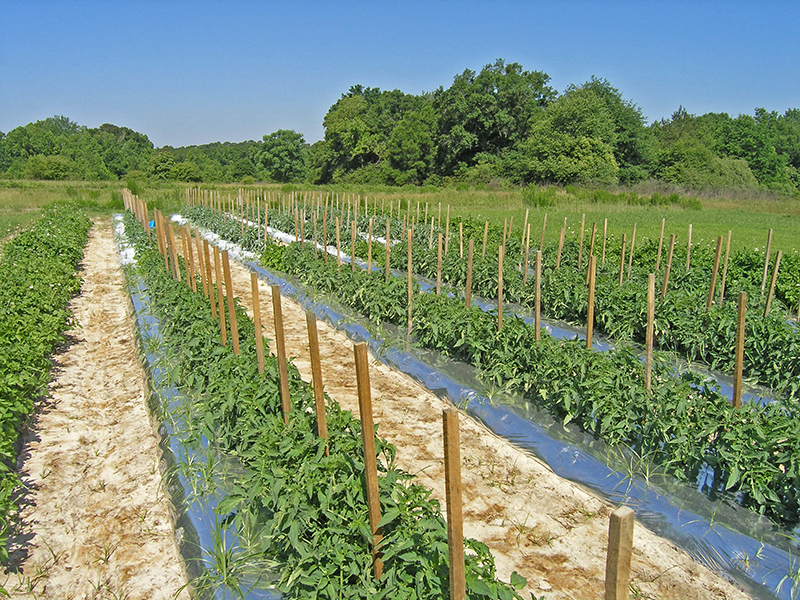
Figure 1: Field experiment to evaluate the effects of UV-mulch, kaolin, and companion plants on flower thrips in tomato (Photo Joe Funderburk)
Joe Funderburk, UF/IFAS Entomology Specialist
The western flower thrips (Frankliniella occidentalis) has spread worldwide as a result of global trade. It directly damages numerous crops in Florida as a result of adult and larval feeding activities. It is also the key vector of several tospoviruses that damage numerous crops in Florida, namely Tomato spotted wilt virus, Tomato chlorotic spot virus, and Groundnut ringspot virus.
The common native species of flower thrips in Florida (Frankliniella bispinosa and Frankiliniella tritici) have little to no pest status in most crops. Their feeding and egg-laying rarely causes economic damage, and they are not the vectors of tospoviruses under field conditions. In fact, they are important competitors of the western flower thrips that limit its populations in Florida.
The minute pirate bugs are the key predators of the flower thrips. There are two native species that occur in Florida (Orius insidiosus and Orius pumilio). They naturally invade numerous crops, and provide biological control of flower thrips, if populations are conserved through the avoidance or selective use of insecticides. The number of the predator bugs relative to the number of flower thrips provide a reliable predictor of the ability of minute pirate bugs to suppress and control populations of thrips. Thrips populations are suppressed at a ratio of one predator per 180 thrips.
Because of the difference in the pest status of individual flower thrips species, it is important to identify the number of each species in scouting and research programs. It is also important to determine the number of thrips (adults and larvae) relative to the number of minute pirate bugs (adults and nymphs) in order to evaluate their effectiveness as a biological control agent. An efficient system for identifying and counting the individual species of flower thrips and the number of minute pirate bugs was developed in Florida. This system was detailed in a 2019 video article published in the Journal of Visualized Experiments. The publication in both written and video form details and illustrates the methodology to estimate the densities of individual thrips and minute pirate bug species in the flowers of fruiting vegetables and companion plants. The data are used to determine the efficacy of management tactics, and to evaluate the benefits of predation by minute pirate bugs.

Figure 2: Field experiment to evaluate the effects of UV-mulch, kaolin, and companion plants on flower thrips in pepper (Photo courtesy Glades Crop Care)
The procedures and results from two experiments are detailed in the publication. These were experiments conducted to evaluate the effectiveness of a push-pull strategy against flower thrips in tomato and pepper. The experiments evaluated the efficacies alone and in combination of ultraviolet-reflective mulches, kaolin application to the crops, biological control by minute pirate bugs, and two companion plants (Spanish needle and sunflowers). The charts in the publication and in the video show the effects of each tactic on thrips population dynamics throughout the season. The morphological characters used to identify thrips and minute pirate bug species also are illustrated.
–
Use the following links to access the Journal of Visualized Experimentation video and publication:
Video link: Sampling for Estimating Frankliniella Species Flower Thrips and Orius Species Predators in Field Experiments
Written Publication: Sampling for Estimating Frankliniella Species Flower Thrips and Orius Species Predators in Field Experiments
–
Additional links to information about species of flower thrips:
Western Flower Thrips
Florida Flower Thrips
Flower Thrips
–
Link to information about minute pirate bugs:
Insidious Flower Bug, Minute Pirate Bug
- Sampling for Flower Thrips and Their Key Predator in Vegetable Crops - September 27, 2019
- Adding Flowering Plants to Strawberry Fields to Enhance Pest Management and Biodiversity - May 11, 2018
- New Insect and Mite Control Guide for Florida Cotton Growers - September 8, 2017
